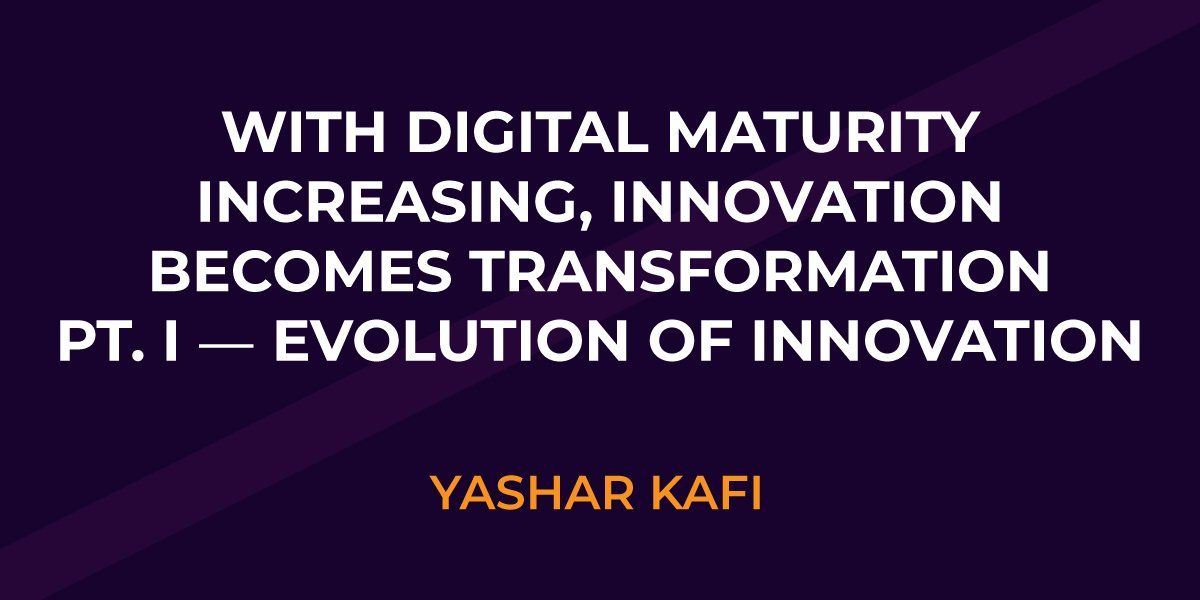With Digital Maturity Increasing, Innovation Becomes Transformation Pt. II ─ From Transformation to Maturity
A lot of organizations plunge into the deep-end when it comes to digital innovation and transformation. By the end of the process, they have innovated, implemented, and transformed their business infrastructure. But what happens next? If they have done a good job, the organization is on its way to achieving digital maturity.
Some people are confused about the difference between ‘transformation’ and ‘maturity,’ questioning what the difference is.
- Digital transformation leverages new processes and practices, allowing companies to compete in an increasingly digital world. It is often adopted reactively.
- Digital maturity is more proactive. An organization has achieved digital maturity when it has increased collaboration, is scaling innovation, and completely rethinks its approach to talent acquisition.
When an organization achieves full digital maturity, it is in an excellent position to achieve better results. In fact, according to a report by Boston Consulting Group , when it comes to marketing for consumer engagement, digitally mature organizations reported cost savings of up to 30% and revenue increases of as much as 20%. It is clear that shifting the organization’s focus from transforming to maturing will likely result in a range of benefits that improve its ability to compete.
Let’s take a look at three key factors used by organizations to measure their journey along the digital maturity curve and figure out how to engage with their customers at the right time.
Measurable Actions
Companies should consider installing data-driven attribution technology to better understand the customer journey. This technology can provide valuable insights that allow the C-Suite to make more informed, financially prudent, and time-efficient decisions across the business, from budgets to growth strategies.
Use Suitable Tech and Data
The report provided by Boston Consulting Group also revealed that if a business implements the correct combination of data and digital technologies, they can reduce their cost per action by 40%, with the potential to see their online transactions skyrocket.
When an organization is striving for digital maturity, it takes a lot more than just basic in-house technical capabilities to remain competitive. Staff need to have technical know-how and access to the right equipment and platforms. When a business is digitally mature, they can easily collate data from customers and markets, utilizing the right technology to ensure that organizational initiatives have the insights they need.
Get The Right Talent
Success in a digital world has one key proponent that is completely unrelated to technology: humans. To reach digital maturity, companies need to find the right staff to pair with their technology. Boston Consulting Group found that if a company integrates advanced technology into its infrastructure and combines it with specialized human supervision, its ability to reach and engage with the target market can rise by up to 35%. Once an organization has innovated its way to digital transformation, it is time for the C-Suite to shift its focus to digital maturity. As Boston Consulting Group has clearly demonstrated, digital maturity drives rapid business performance. Leaders must remember, however, that the implementation of technology is just one part of the digital maturation process. To reach full maturity, organizations must also invest in and train their human resources to ensure that they receive the full ROI of their p




